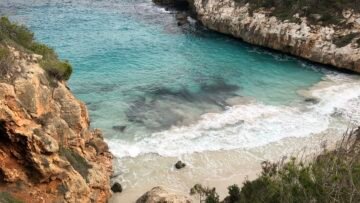This is the first part of my healing story — from the day everything shifted to the start of a long journey through uncertainty, resilience, and eventually, remission.
Before it all
Looking back, I thought I was doing everything right. I was living a health-concious life. I had never smoked, didn’t drink much, exercised regularly, and loved spending time outdoors , and maintained a good work-life balance by working part-time..
I’ve always felt deeply connected to nature – a connection I credit partly to my time at a Rudolf Steiner (Waldorf) school which left its mark in a beautiful way. I preferred natural approaches to healing and didn’t tolerate medications well. Even strong painkillers often made me nauseous.
The diagnosis
On a sunny August day, I was out in the garden playing with my dog when I suddenly felt a little off. I instinctively checked my pulse and realised it was very low (around 30 bpm). I went inside and took a cold shower before calling my partner. He told me to go check it out, just in case.
My best friend, Sandro, drove me to my GP, who immediately did an ECG and some blood work. The next thing I knew, I was being rushed to the nearest hospital. In the ER, the atmosphere was tense. Though I didn’t feel that bad, a nurse eventually explained that I had an intermittent
AV Block III — meaning that for short periods of time, none of the three electrical pathways in my heart were functioning. It was life-threatening.
I was transferred to a larger hospital — and that’s where I stayed for the next two weeks.
In the hosptial
What followed was an avalanche of tests: cardiac MRI, PET-CT FDG, X-rays, heart ultrasound, daily blood draws, a bronchoscopy… you name it.
At first, the ER cardiologist couldn’t find a cause for the AV Block III and said I might be discharged soon — just in time for my planned trip to Bordeaux. But after another complete AV block during the first night, I was told I’d need to stay and undergo further testing.
A few days and numerous test later, a new cardiologist entered my room. He was a specialist, trained at the Mayo Clinic. He just stood there and said:
“Mrs. Stocker, you probably have cardiac sarcoidosis. This means you are chronically ill and will need medication for life.”
I was stunned. I have what? I started crying, and the first thing I asked was if that meant I couldn’t go on long hikes anymore — something I had loved doing.
I had never heard of sarcoidosis before. It’s a rare autoimmune disease, and even rarer when it affects only the heart. In most people, it affects the lungs. It causes scarring — and that was likely what had disrupted my heart’s electrical pathways. But they couldn’t confirm the diagnosis because taking a tissue sample from the heart would have been too risky.

A Traumatizing Experience
The time I spent in the hospital was traumatizing. Undergoing all those tests and daily blood draws. The nurses weren’t especially friendly either, and I couldn’t sleep — I shared a room with an elderly woman who snored all night. Eventually, they let me sleep in a tiny exam room with no windows. During the day, I returned to the shared room, where the nurses insisted on keeping the windows closed, even though all we wanted was fresh air. I had this awful feeling of being powerless — I felt completely at their mercy. Thankfully the cardiologist allowed me to leave the hospital building within the radius of 50 meters (my heart was monitored and so I couldn’t go too far or else the “connection” to the monitor device which I had to carry around would fade) and I enjoyed time outside in the fresh air with my visitors.
Before discharge, I met the rheumatologist who was to monitor my medication. I asked if there was anything I could do from a lifestyle perspective — diet, holistic support, anything. He laugehd and answered:
“You think you can heal with herbs? You don’t look like someone who lives off hamburgers or hot dogs — so you’re fine.”
I left the hospital with a small device implanted under my skin near my heart, designed to monitor any dangerous arrhythmias and send daily reports to my cardiologist. I had refused the defibrillator/pacemaker (ICD) at that point — I was too overwhelmed to make such a major decision, even though the head cardiologist warned it was at my own risk. Another doctor said I might not need it, and I wanted time to think.
I was prescribed high-dose Prednisolone, Methotrexate, open-ended antibiotics, a gastric protector, and calcium — something sarcoidosis patients should never be given, as even the medication insert warns against it.
I was relieved to finally leave this “prison” and go home.
But what no one could have predicted was that the real challenge wasn’t over — it was just beginning.
🌿 To Be Continued in Part 2…
In my next post, I’ll share how life changed after the hospital — the onset of PPPD, the daily battle with invisible symptoms, and how I slowly found a new path to healing through holistic medicine.



